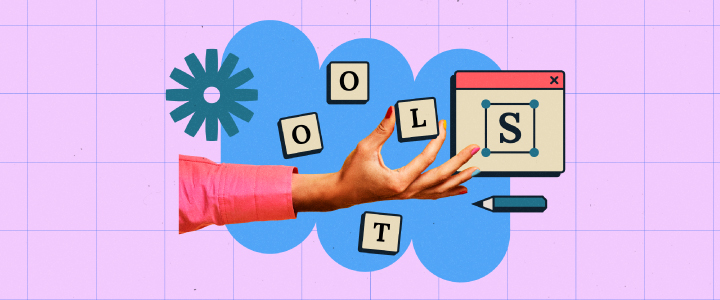
4 min reading time
6 Ways Cultural Differences Impact Employee Training
The key to creating a a productive and culturally aware team is to embrace the diverse backgrounds of your employees. But, let’s be honest — it can be tricky to tailor employee training to fit all these different cultural perspectives.
So, what’s the secret to turning this challenge into a strength?
In this article, we’re going to guide you through adjusting your employee training to match various cultural norms and preferences. We’ll dive into different communication styles, learning preferences, and strategies and tools to make your training effective and culturally savvy.
Adjust to direct vs. indirect communication styles in training
In a multicultural environment, you must understand and adapt to various communication styles. Different cultures have their ways of communicating directly or indirectly which greatly influences how people perceive and participate in learning activities.
For instance, in a training session with participants from Japan and the United States, you might notice differences: a Japanese employee might express disagreement indirectly to maintain harmony, while an American might be more direct and outspoken. You need to be skilled at identifying these differences and adjust your training methods accordingly. This way, you’ll create a more inclusive and responsive learning environment.
Why not try role-play scenarios? They’re a fantastic way to grasp the subtleties of direct and indirect communication in a diverse workforce.
Through these scenarios, your employees can safely experience and practice varying communication styles. It’s a hands-on approach that fosters empathy and understanding, empowering your team to communicate more effectively in a diverse workplace.
Analyze visual, auditory, and kinesthetic learning preferences in cultural contexts
Training programs thrive when you tap into the diverse learning preferences found in different cultures. People learn in various ways — some visually, others through listening, and some by doing. Recognizing and adapting to these styles can make a big difference in how effectively individuals take in and process information.
How about using the VARK model? This tool helps you identify whether your learners prefer visual, auditory, reading/writing, or kinesthetic approaches. It’s a great way to meet the varied learning preferences in a multicultural environment.
Aligning your training materials and methods with this model will help you reach a broader audience, enhancing their understanding and memory retention. Ultimately, by addressing these diverse learning styles, you’re creating a training environment that’s more inclusive and effective.
Navigate language diversity challenges in global companies
When training in global companies, it’s important to tackle language barriers head-on. They are a major challenge in communication and understanding, especially with a workforce that speaks many different languages and dialects. To make sure everyone gets the same message from your training materials and instructions, you need to take steps to overcome these language differences.
A prime example of this is how CANAL+ successfully delivered online training to 15,000 learners worldwide. They adopted a localized approach, providing content in over 15 languages, customizing visuals to each learner’s region, addressing common challenges specific to different countries, and appointing regional ambassadors.
Follow a similar approach to make sure all your employees, no matter their language background, feel included and can engage fully in the training.
Employ technology for inclusive language in training
Technology can be a real game-changer when it comes to breaking down language barriers in training sessions. With advanced tools like real-time translation apps and multilingual platforms at your fingertips, you have incredible opportunities to make communication more inclusive.
These tools help bridge the gap between speakers of different languages, creating a training environment that’s both more inclusive and effective.
Think about how valuable real-time translation devices and apps can be in sessions with participants who speak various languages. Using these tools promotes inclusivity, letting everyone engage in the language they’re most comfortable with.
Develop culturally neutral and relevant training materials
In global training scenarios, it’s vital to develop training materials that are both culturally neutral and universally relevant. Your content should find the sweet spot between being sensitive to various cultures and applicable to diverse backgrounds. Aim to create materials that connect with a broad audience without falling into the traps of cultural biases or stereotypes.
A great way to achieve this is by using culturally neutral examples and adapting the context to suit different audiences. This strategy helps ensure your training content isn’t just free from cultural biases but is also meaningful and accessible to employees from various cultural settings.
Additionally, the role of HR management system software in streamlining the onboarding process is crucial. Use it to provide customized training content that considers the cultural background and learning preferences of each new employee. Tailoring your approach ensures that every new hire gets the knowledge and skills they need in a way that’s both culturally respectful and effective.
Adjust training for hierarchical vs. egalitarian cultural norms
It’s essential to adjust your training methods to fit the cultural attitudes toward authority and hierarchy of your audience. Recognizing whether a culture leans towards hierarchical norms or is more egalitarian can hugely improve how your learning is received and its overall effectiveness.
In hierarchical cultures, where there’s a high regard for power distance, using indirect feedback methods can be beneficial. This approach ensures that feedback is delivered and received in a way that respects cultural norms, helping to avoid discomfort or misunderstandings.
Conversely, in more egalitarian societies, you might want to opt for a more direct and participative approach. This aligns better with cultures where hierarchy is less emphasized and open communication is valued.
Embracing cultural diversity for effective employee training
Each approach is crucial in creating a training environment that’s not only inclusive and respectful but also perfect for learning, especially for employees hailing from diverse cultural backgrounds.
Remember, the need for continual cultural adaptability is huge. As your business grows and crosses borders, welcoming an increasingly diverse workforce, adapting your training methods to fit different cultural contexts becomes essential. This constant adaptation keeps your training relevant, effective, and inclusive, paving the way for a positive and productive workplace.
This was a guest post by Rob Press, Content Marketing Manager Deputy: Deputy is an all-in-one workforce management solution that simplifies employee scheduling, timesheets, tasking, and communication. We’re making it easier for businesses and teams to hire, schedule staff, manage documents and leave requests, streamline payroll, and take the admin out of work so that our customers can focus on doing what they love.



